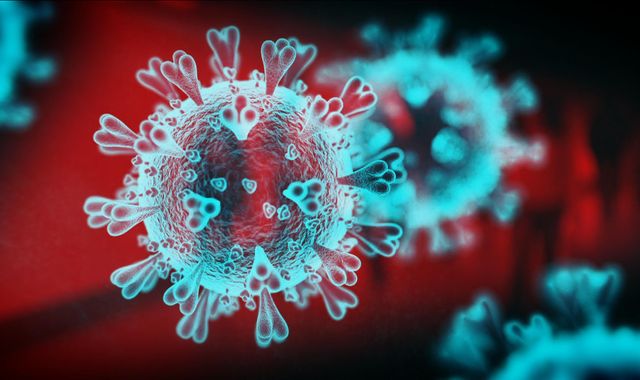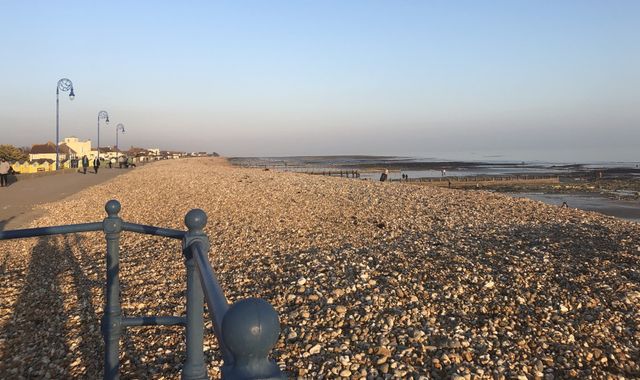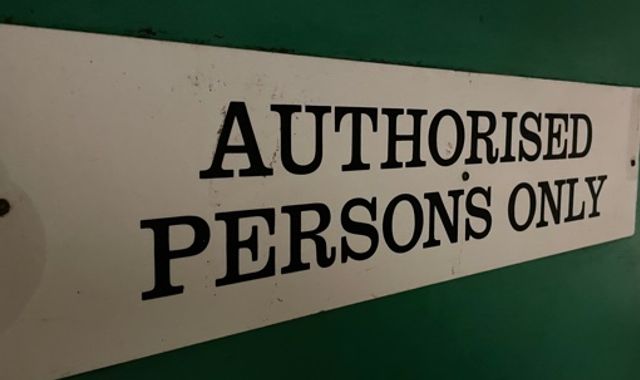Coronavirus: Why the government will anxiously look at the R number as lockdown is eased
Written by News on 10/05/2020
As the government begins to ease the lockdown it will keep an anxious eye on the R number.


That’s the reproduction number of the virus, a measure of how fast it’s spreading.
Expect to hear it come up many times over the coming weeks at the Downing Street news conference.
So what is it and why does it matter?
What is R?
At the start of the COVID-19 epidemic, R was 3 – meaning every infected person was passing on the virus to around three other people. Each of them would pass it on to three more and so on, which is why the number of cases grew exponentially.
If R drops below 1 then the virus isn’t being spread to enough people to sustain an outbreak, so it gradually peters out. The closer it is to zero, the faster cases drop.
When the lockdown was announced in March the amount of social contact people had dropped overnight and R plummeted to around 0.6.
What is it now?
Somewhere between 0.5 and 0.9, according to the committee that channels scientific advice to the government – the Scientific Advisory Group for Emergencies (SAGE).
The committee gives a range because six different groups of scientists calculate the number based on a variety of data – patients admitted to hospital, critical care bed occupancy, deaths, how much contact there is between people, and so on.
They all come up with a slightly different answer. SAGE meets twice a week to consider the latest calculations – it never relies on just one estimate in case of data anomalies.
More reliable data will come from a study being run by the Office of National Statistics. Scientists will swab several thousand households every week over the next year, which will show how quickly the virus is spreading.
Is the R number the same across the country?
No. There are regional differences.
One of the modelling teams, the Centre for Mathematical Modelling of Infectious Diseases, estimates that it’s currently highest in Scotland and the North East of England – just below 1.
The East of England has the lowest R, around 0.6.
If you could zoom in further you would find R was higher in urban than rural areas because of the density of the population – quite simply the virus has more opportunities to spread.
But areas with lots of white-collar workers who are able to work from home, such as the City, are likely to have a lower rate of transmission.
There are lots of variables and there is a significant margin of error.
Why is R increasing again?
Because we have three inter-twined epidemics in the UK.
In the community the outbreak is shrinking fast.
But in hospitals, and particularly care homes, the virus has continued to spread.
As the total number of cases of COVID-19 falls across the country, those in care homes are accounting for a higher proportion of the total.
That’s why the UK’s R number has risen slightly – up from 0.6 to 0.75 or perhaps a bit higher, according to one estimate.
It doesn’t mean the lockdown has failed.
But it is a warning to the government.
It must quickly break the transmission chains in care homes, not just because of the awful death toll, but because care workers could carry the virus back out into the community when they go home.
That could seed new outbreaks.
What happens to R when the lockdown is lifted?
As people start to move around more there will inevitably be more opportunities for the virus to spread, so R will rise.
Allowing people more freedom to exercise outdoors and reopening businesses that are largely outside, such as garden centres, is likely to have only a small impact.
But reopening shops, restaurants and pubs, where social distancing is much harder to maintain, would increase R more sharply.
If it goes above 1 again the outbreak would bounce back, perhaps rapidly.
So the government has to ease the restrictions gradually, waiting two to three weeks before taking the next step just to see if cases start rising.
:: Listen to the Daily podcast on Apple Podcasts, Google Podcasts, Spotify, Spreaker
There’s every chance that social distancing measures will have to be tightened again, though perhaps only in areas where the virus flares up.
What’s happened abroad?
The R number in Denmark has increased from 0.6 to 0.9 since schools were reopened.
When Germany relaxed its restrictions R bounced back from 0.7 to 1, then settled down to around 0.75.
Being the last major European country out of full lockdown gives UK scientists the advantage of plugging real-world data into their computer simulations.
Is it only R that matters?
No. The size of the epidemic matters too.
The current estimate is that around 0.2% of the population is infected – roughly 200,000 people.
And Professor John Edmunds, who sits on the SAGE committee, has estimated that there are 20,000 new cases a day (much higher than the number being picked up by testing).
It’s a lot of people. If R increases to around 1 – and the epidemic is in a steady state – there will continue to be a lot of people.
That’s more deaths and more pressure on the NHS.
So scientists want the numbers to come down substantially before any significant easing of the lockdown.
But when and how to lift the lockdown is a political decision.
The longer the economy is in a coma, the bleaker the outlook for jobs and long-term health.
It’s a tricky decision. And the government really doesn’t have much wriggle room.
Watch Sky News at 7pm tonight for the Prime Minister’s address to the nation over ending the lockdown.
(c) Sky News 2020: Coronavirus: Why the government will anxiously look at the R number as lockdown is eased







